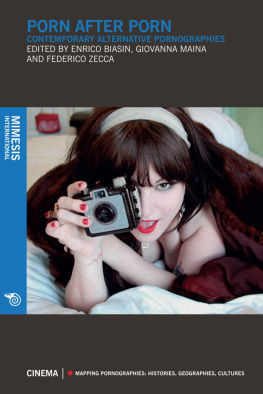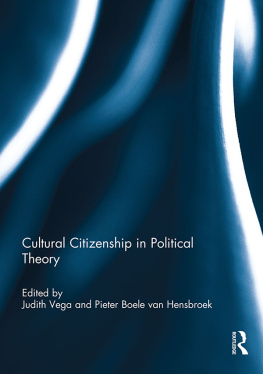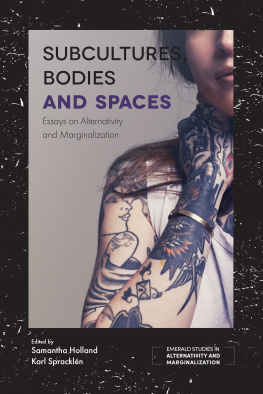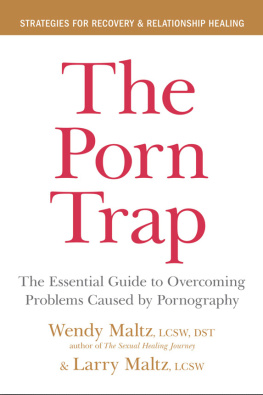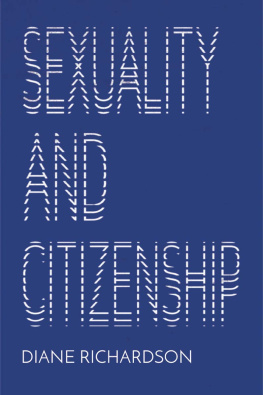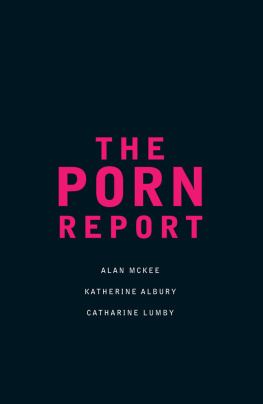CINEMA / Mapping Pornographies: Histories, Geographies, Cultures
www.mimesisinternational.com
N. 1
Book series edited by Enrico Biasin , Giovanna Maina , Federico Zecca
Scientific committee
Feona Attwood (Middlesex University)
Mariana Baltar (Universidade Federal Fluminense)
Patrick Baudry (Universit de Bordeaux)
Oliver Carter (Birmingham City University)
Giacomo Manzoli (Universit di Bologna)
Wencke Fugelli Mhleisen (Universitetet i Stavanger)
Katrien Jacobs (The Chinese University of Hong Kong)
Peter Lehman (Arizona State University)
Gloria Lauri-Lucente (University of Malta)
Alan McKee (Queensland University of Technology)
John Mercer (Birmingham City University)
Mireille Miller-Young (University of California Santa Barbara)
Peppino Ortoleva (Universit degli Studi di Torino)
Susanna Paasonen (Turun yliopisto - University of Turku)
Mario Perniola (Universit di Roma Tor Vergata)
Marc Siegel (Goethe-Universitt Frankfurt am Main)
Clarissa Smith (University of Sunderland)
Magnus Ulln (Karlstads Universitet)
Thomas Waugh (Concordia University)
Porn after Porn
Contemporary Alternative Pornographies
Edited by
Enrico Biasin, Giovanna Maina, Federico Zecca
This book is published on the occasion of the FILMFORUM 2014 / XII MAGIS - GORIZIA INTERNATIONAL FILM STUDIES SPRING SCHOOL with the support of:
Associazione Culturale LENT
Associazione Culturale Mai
Cover Photo:
Courtney Trouble, photographed by Elisa Shea for Indie Porn Revolution
elisashea.com
indiepornrevolution.com
2014 Mimesis International
www.mimesisinternational.com
e-mail: info@mimesisinternational.com
Book series: CINEMA / Mapping Pornographies: Histories, Geographies, Cultures, n. 1
Isbn: 9788857528274
MIM Edizioni Srl
P.I. C.F. 0241937030
The b ook s eries
Mapping Pornographies: Histories, Geographies, Cultures
The project of this Book Series is grounded on the acknowledgement that a thorough analysis of the historical and geographical distinctive features of pornography is fundamental in order to achieve a deeper and more complex understanding of pornography itself as a cultural form. On one hand, in fact, the project aims to reconstruct the historical variables that define the cultural existence of pornographic films and videos, thereby establishing the conditions that actually make their existence possible. On the other, the project intends to trace the geographical constants that distinguish the different pornographic forms in terms of national , regional , and cultural identity . The main objective of this book series, therefore, is to map the several morphological expressions (and transformations ) that hard-core materials have undergone during their historical evolution and geographical differentiation.
This book series has been conceived within the context of the Porn Studies Section of the MAGIS International Film Studies Spring School of Gorizia. The MAGIS, founded in 2003, is an international doctoral school promoted by a cluster of European Universities under the coordination of the University of Udine (Italy), and provides interdisciplinary seminars and workshops on topics such as cinema and visual arts, film heritage, and post-cinema. In 2010, the School has inaugurated a Porn Studies s ection, which is now one of the most relevant European academic conferences entirely devoted to the study of pornography: a very important space of discussion for European as well as Extra-European scholars, and a moment of interaction between scholars and PhD and MA students.
(e.b, g.m., f.z.)
Feona Attwood
Foreword
The production and consumption of diverse pornographies is far from a new phenomenon, though the idea of porn as a singular thing and as a social problem has dominated almost all public discourse on the topic to date. The academic study of these pornographies has been spurred on by the increasing public visibility of different types of pornography and the gradual emergence of a broader field of porn studies. Discussions of the porn that comes after porn as it has been presented in this kind of discourse have so far tended to focus around pornographies that are experienced as particularly real because of their aesthetics or origins, as well as those that are motivated by political, artistic and ethical concerns.
These discussions have been notable in attracting artists, activists and academics at events such as the netporn conferences in Amsterdam in 2005 and 2007, the porn film festival and post porn symposium in Berlin in 2006, the Arse Electronica conferences that have examined sex and technologies each year since 2007, and the US Sex 2.0 conferences in 2008 and 2009 that focused on the theme of social media, feminism and sexuality.
The first Amsterdam netporn conference considered the potential of art and critical research in times of heightened information surveillance, filtering and censorship, The associated anthologies edited by Katrien Jacobs, Marije Janssen and Matteo Pasquinelli (2007) and Tim Stuttgen (2009), who sadly died in 2013, provided an important focus for discussion beyond the conferences.
Post porn has been an important term throughout these discussions, used to describe work that is explicit, politicized and challenging. The term is associated with the work of the post porn modernist, Annie Sprinkle, which roams across the categories of art, pornography, sex work, education, politics and spirituality. Post porn work disrupts the boundaries between media and performance genres and challenges the ways that particular types of work are categorized and valued. Given that pornography has often been popularly associated with oppressive ideas of gender and sexuality, it is also notable for a commitment to queer and feminist politics. Another focus of interest has been netporn and the ways that online technologies re-structure the pornographic (Paasonen 2010, 1298). A third has been on DIY, an ethos that extends across new and alternative sexual cultures, subcultural sexualities, kink communities, and the amateur pornographies that are part of a broader contemporary and participatory culture.
What practice and study in these three areas has done is to complicate ideas of a singular porn industry and of sexual labour more generally. It has enabled the discussion of what sustainable, fair trade, green, and ethical pornographies might look like, and allowed for the examination of the ways in which pornographies may be sources of community, culture, consumption and citizenship all at once. It has shown that boundaries between identity, practice, community, intimacy, fantasy and representation cannot be firmly drawn any more, if indeed they ever could.
One of the misapprehensions about studies of porn after porn is that they misinterpret what they find as evidence that there are two basic and opposing types of porn, hence the accusation that is sometimes made that studying new pornographies is a way of avoiding the analysis of real or typical porn, conceptualized as mainstream, cookie-cutter, heteroporn, and characterized by pornonormativity. But what the study of alternative pornographies increasingly suggests is that while mainstream and alternative, porn and post porn are incredibly useful as categories for the purposes of comparison and investigation, as well as for staking claims to identity and community, those categories are ultimately artificial. Rather than dismiss the study of new and alternative pornographies, we need to recognize their importance for the study of pornographies of all kinds and the cultures that produce them.

